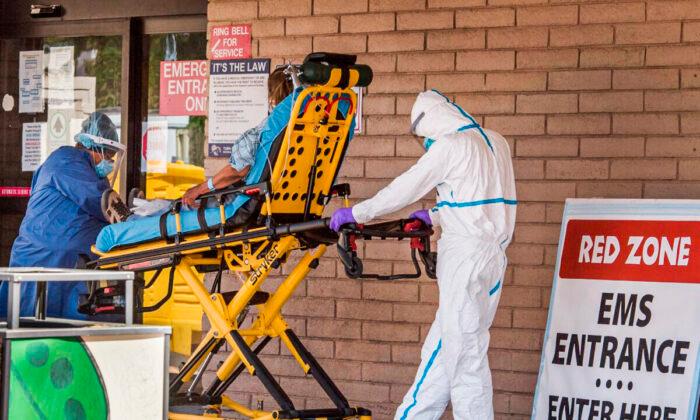Specifically, while adult hospitalizations surged during the Delta wave compared to the six months prior, the proportion of patients with COVID-19 who were admitted to an ICU received invasive mechanical ventilation (IMV) or died during their hospitalization didn’t significantly change during this period, the data suggest.
However, the research shows that adults aged 18 to 49, many of whom were unvaccinated, accounted for a larger proportion of hospitalized patients compared with the pre-Delta period—35.8 percent of hospitalizations during the Delta surge compared to 24.7 percent from the previous six months.
The Delta variant of the CCP virus grew in prevalence in the country to more than 85 percent on July 10 from 1.8 percent on May 1. It’s now the dominant strain around the globe, and it has been reported in at least 187 out of 194 World Health Organization member countries, the organization stated earlier this month.
“Although this variant is more transmissible, this study did not find significantly higher proportions of hospitalizations with ICU admission, receipt of IMV, or in-hospital death in nonpregnant hospitalized adults,” the study reads.
The researchers also noted that some patients could also have been hospitalized but not tested for the virus, and the data could potentially change when including cases from the summer months who don’t yet have a discharge disposition.
In both groups, very few children needed to be hospitalized and long periods of illness were uncommon. In both groups, half of the children were sick for no more than five days.
“Our data suggest that clinical characteristics of COVID-19 due to the Delta variant in children are broadly similar to COVID-19 due to other variants,” the researchers said, echoing remarks from CDC Director Dr. Rochelle Walensky in September that although more children are becoming infected with the virus, studies show that there hasn’t been an increased severity in children.





